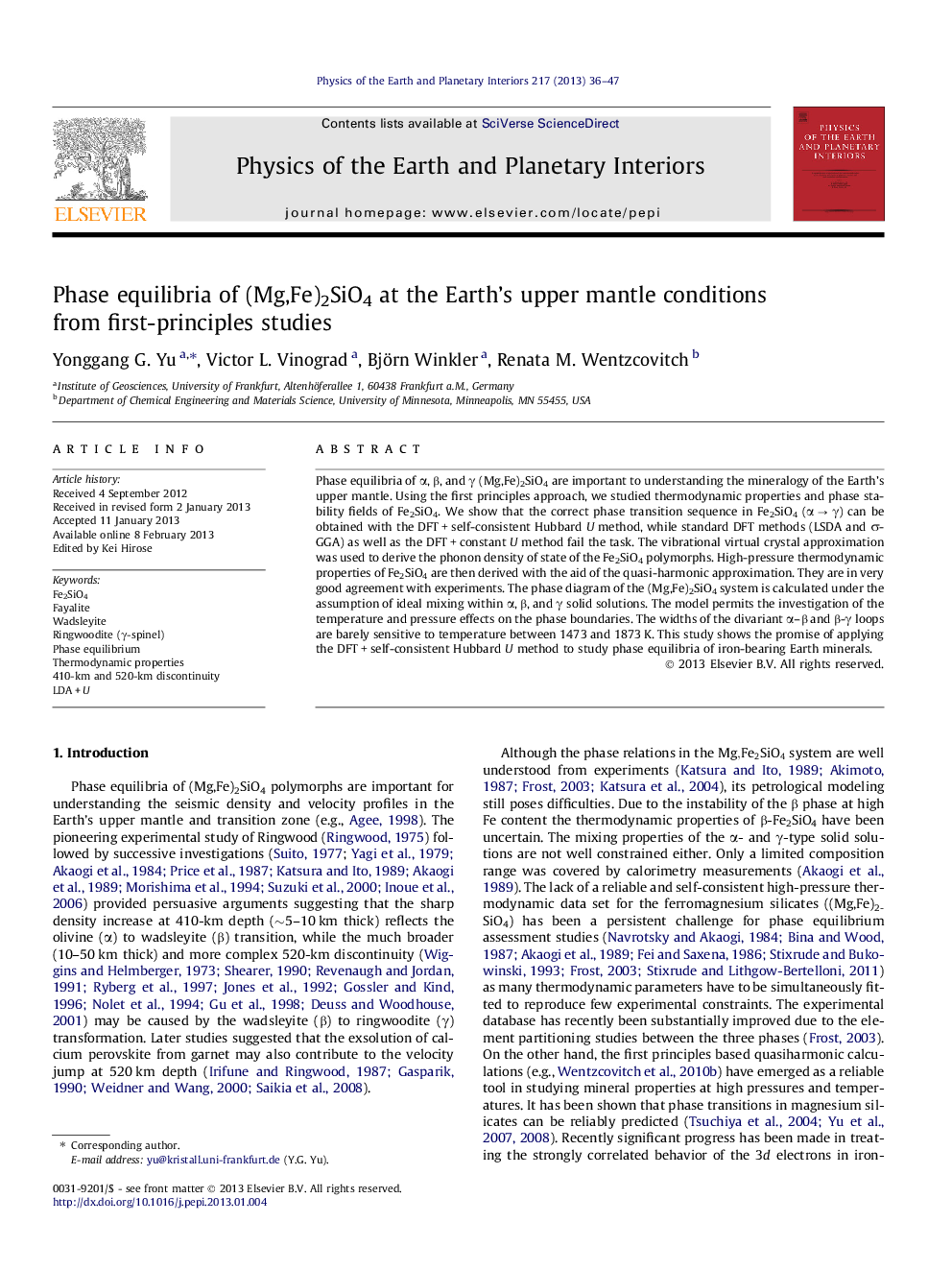| Article ID | Journal | Published Year | Pages | File Type |
|---|---|---|---|---|
| 4741617 | Physics of the Earth and Planetary Interiors | 2013 | 12 Pages |
Phase equilibria of α, β, and γ (Mg,Fe)2SiO4 are important to understanding the mineralogy of the Earth’s upper mantle. Using the first principles approach, we studied thermodynamic properties and phase stability fields of Fe2SiO4. We show that the correct phase transition sequence in Fe2SiO4 (α → γ) can be obtained with the DFT + self-consistent Hubbard U method, while standard DFT methods (LSDA and σ-GGA) as well as the DFT + constant U method fail the task. The vibrational virtual crystal approximation was used to derive the phonon density of state of the Fe2SiO4 polymorphs. High-pressure thermodynamic properties of Fe2SiO4 are then derived with the aid of the quasi-harmonic approximation. They are in very good agreement with experiments. The phase diagram of the (Mg,Fe)2SiO4 system is calculated under the assumption of ideal mixing within α, β, and γ solid solutions. The model permits the investigation of the temperature and pressure effects on the phase boundaries. The widths of the divariant α–β and β-γ loops are barely sensitive to temperature between 1473 and 1873 K. This study shows the promise of applying the DFT + self-consistent Hubbard U method to study phase equilibria of iron-bearing Earth minerals.
► LDA + self-consistent U is used to study stability fields of Fe2SiO4 polymorphs. ► Virtual crystal approximation is used to study vibrational density of states. ► Thermodynamics of Fe2SiO4 were calculated using the quasiharmonic approximation. ► We calculate the phase equilibrium in Mg2SiO4–Fe2SiO4 from an ideal solution model.
